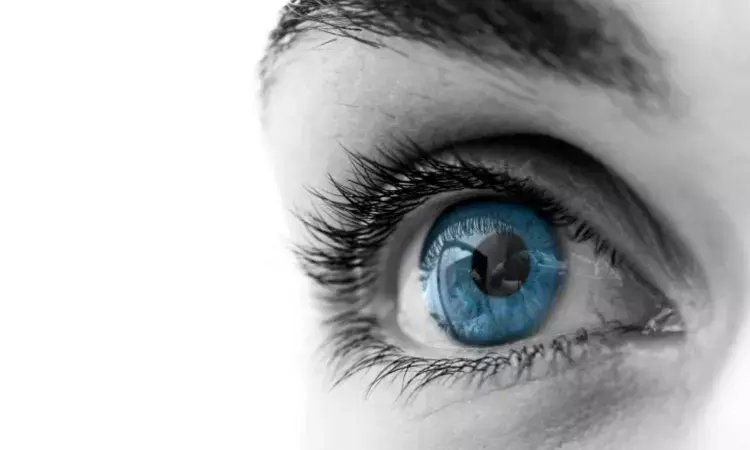- Home
- Medical news & Guidelines
- Anesthesiology
- Cardiology and CTVS
- Critical Care
- Dentistry
- Dermatology
- Diabetes and Endocrinology
- ENT
- Gastroenterology
- Medicine
- Nephrology
- Neurology
- Obstretics-Gynaecology
- Oncology
- Ophthalmology
- Orthopaedics
- Pediatrics-Neonatology
- Psychiatry
- Pulmonology
- Radiology
- Surgery
- Urology
- Laboratory Medicine
- Diet
- Nursing
- Paramedical
- Physiotherapy
- Health news
- Fact Check
- Bone Health Fact Check
- Brain Health Fact Check
- Cancer Related Fact Check
- Child Care Fact Check
- Dental and oral health fact check
- Diabetes and metabolic health fact check
- Diet and Nutrition Fact Check
- Eye and ENT Care Fact Check
- Fitness fact check
- Gut health fact check
- Heart health fact check
- Kidney health fact check
- Medical education fact check
- Men's health fact check
- Respiratory fact check
- Skin and hair care fact check
- Vaccine and Immunization fact check
- Women's health fact check
- AYUSH
- State News
- Andaman and Nicobar Islands
- Andhra Pradesh
- Arunachal Pradesh
- Assam
- Bihar
- Chandigarh
- Chattisgarh
- Dadra and Nagar Haveli
- Daman and Diu
- Delhi
- Goa
- Gujarat
- Haryana
- Himachal Pradesh
- Jammu & Kashmir
- Jharkhand
- Karnataka
- Kerala
- Ladakh
- Lakshadweep
- Madhya Pradesh
- Maharashtra
- Manipur
- Meghalaya
- Mizoram
- Nagaland
- Odisha
- Puducherry
- Punjab
- Rajasthan
- Sikkim
- Tamil Nadu
- Telangana
- Tripura
- Uttar Pradesh
- Uttrakhand
- West Bengal
- Medical Education
- Industry
High rate of concurrent retinal non perfusion encountered in Pediatric patients with optic nerve hypoplasia

A new study published in the American Journal of Ophthalmology suggests that there seems to be a significant rate of concomitant retinal nonperfusion in pediatric optic nerve hypoplasia (ONH) patients.
This study was carried out by Natasha da Cruz and colleagues to report the correlation between peripheral retinal nonperfusion, secondary problems, and optic nerve hypoplasia in pediatric patients.
The Bascom Palmer Eye Institute conducted the Retrospective case series investigation between January 2015 and January 2022. Age under 18 years old, a clinical diagnosis of optic disc hypoplasia, and an acceptable-quality FA were the inclusion criteria.
The key findings of this study were:
1. Seven patients (11 eyes) satisfied the criteria for inclusion.
2. The mean follow-up duration was 34.28 months (range 2 - 87 months), and the average
age at presentation was 3.5 years (range 1 month - 8 years).
3. Four patients (57.14%) had bilateral hypoplasia of the optic disc.
4. Peripheral retinal nonperfusion was seen in all eyes on FA, with mild severity occurring
in 7 eyes (63.63%), moderate severity in 2 eyes (18.18%), severe severity in one eye
(9.09%), and extreme severity in one eye (9.09%).
5. In eight eyes (72.72%), there was proof of complete retinal nonperfusion.
6. At the time of diagnosis, two patients (18.18%) had concomitant retinal detachments that were judged inoperable. Researchers witnessed every case without taking any action. During follow-up, no patient was seen to have any problems.
This discovery is not entirely understood, and the association between optic nerve hypoplasia and retinal disorders including familial exudative vitreoretinopathy as well as its connection with septo-optic dysplasia has not yet been thoroughly defined.
In conclusion, peripheral retinal nonperfusion, which is frequent in children with optic nerve hypoplasia, can be challenging to identify without anesthetic testing or fluorescein angiography. FA is a useful technique to identify peripheral nonperfusion in these circumstances. Retinal Results can be faint in certain situations, and in children with poor imaging conducted without a physical examination under anesthesia, they could not be discernible at all.
Reference:
da Cruz, N. F. S., Sengillo, J. D., Fan, J., Negron, C. I., Felder, M. B., & Berrocal, A. M. (2023). Peripheral Retinal Nonperfusion in Pediatric Patients with Optic Disc Hypoplasia. In American Journal of Ophthalmology. Elsevier BV. https://doi.org/10.1016/j.ajo.2023.03.024
Neuroscience Masters graduate
Jacinthlyn Sylvia, a Neuroscience Master's graduate from Chennai has worked extensively in deciphering the neurobiology of cognition and motor control in aging. She also has spread-out exposure to Neurosurgery from her Bachelor’s. She is currently involved in active Neuro-Oncology research. She is an upcoming neuroscientist with a fiery passion for writing. Her news cover at Medical Dialogues feature recent discoveries and updates from the healthcare and biomedical research fields. She can be reached at editorial@medicaldialogues.in
Dr Kamal Kant Kohli-MBBS, DTCD- a chest specialist with more than 30 years of practice and a flair for writing clinical articles, Dr Kamal Kant Kohli joined Medical Dialogues as a Chief Editor of Medical News. Besides writing articles, as an editor, he proofreads and verifies all the medical content published on Medical Dialogues including those coming from journals, studies,medical conferences,guidelines etc. Email: drkohli@medicaldialogues.in. Contact no. 011-43720751


